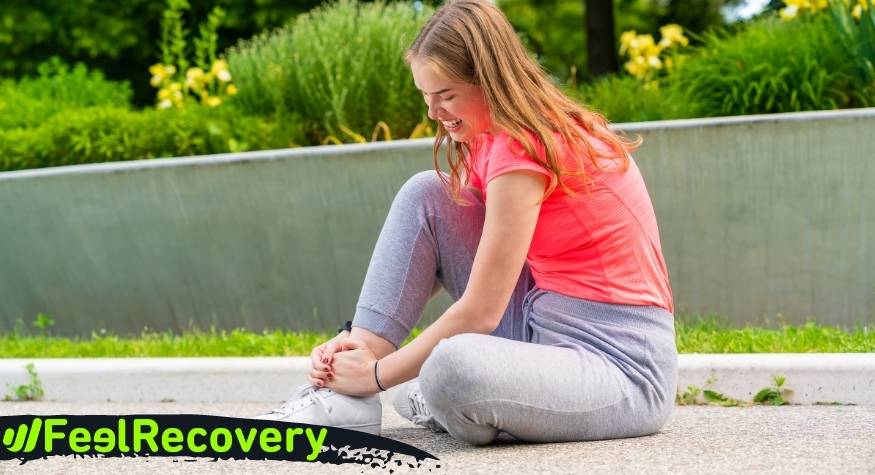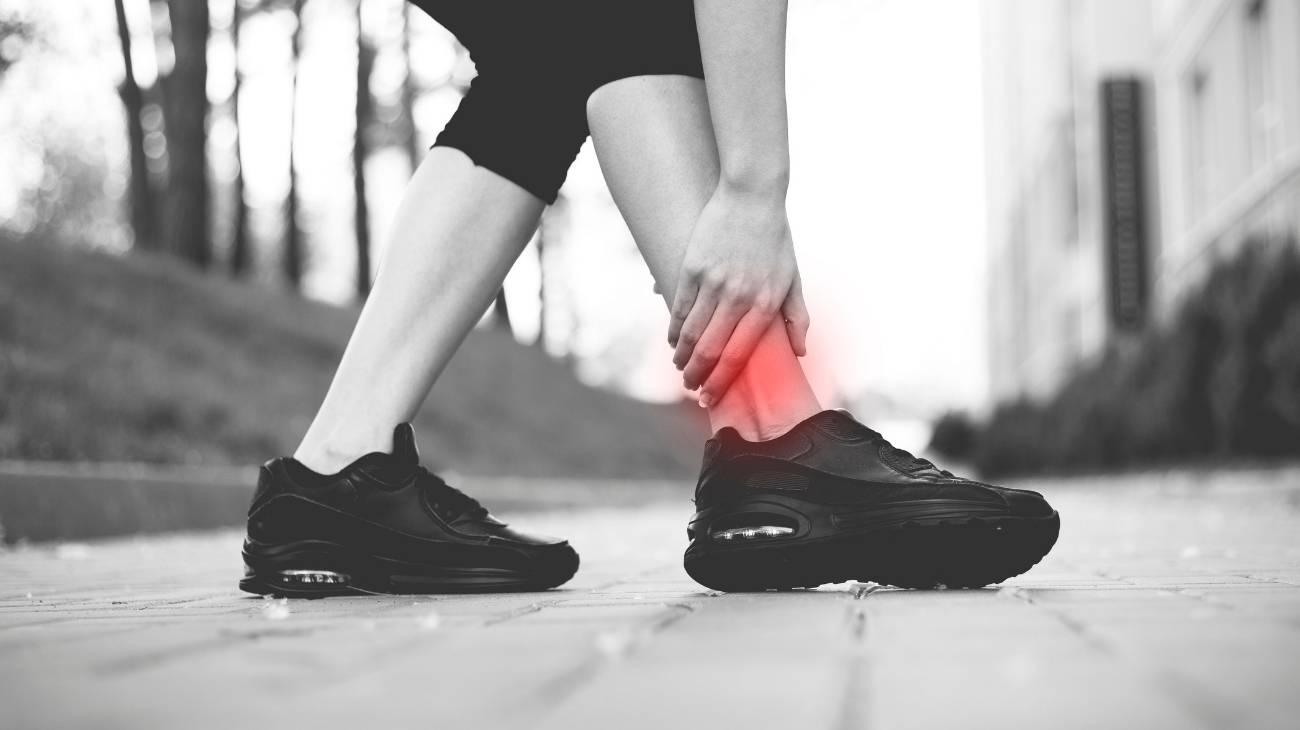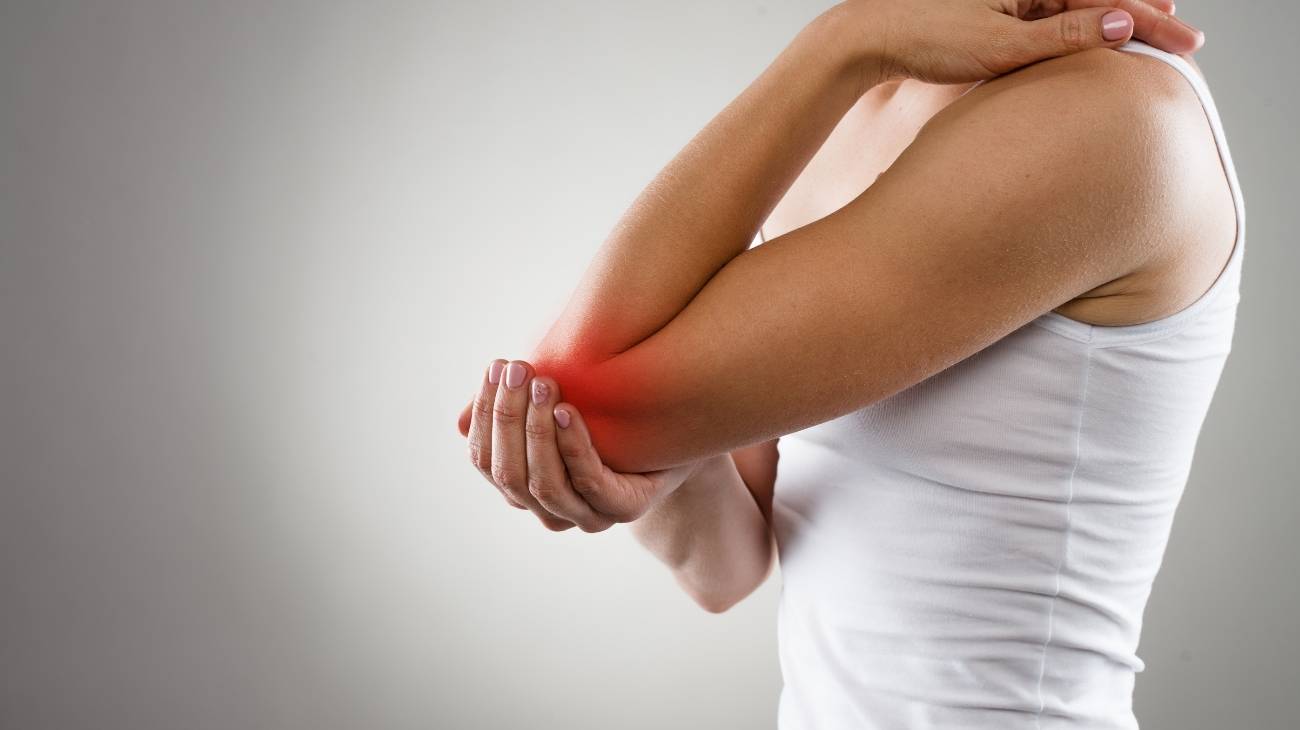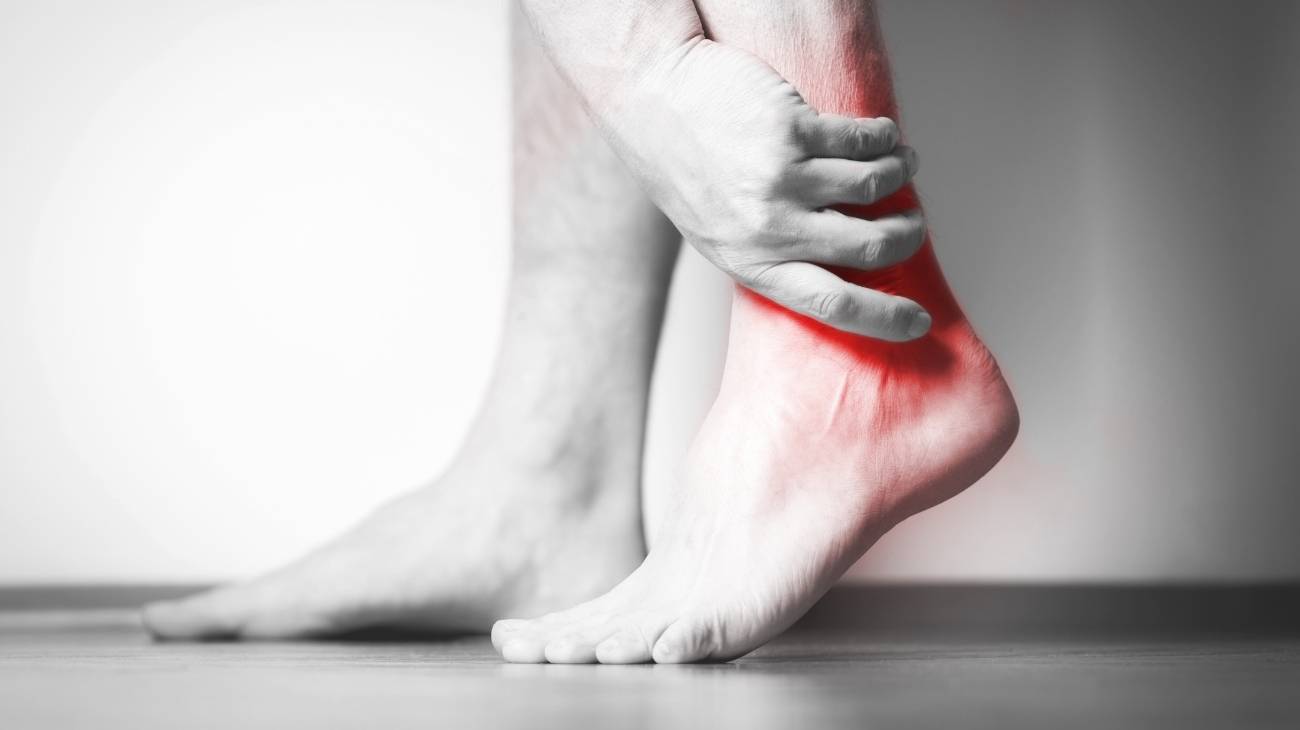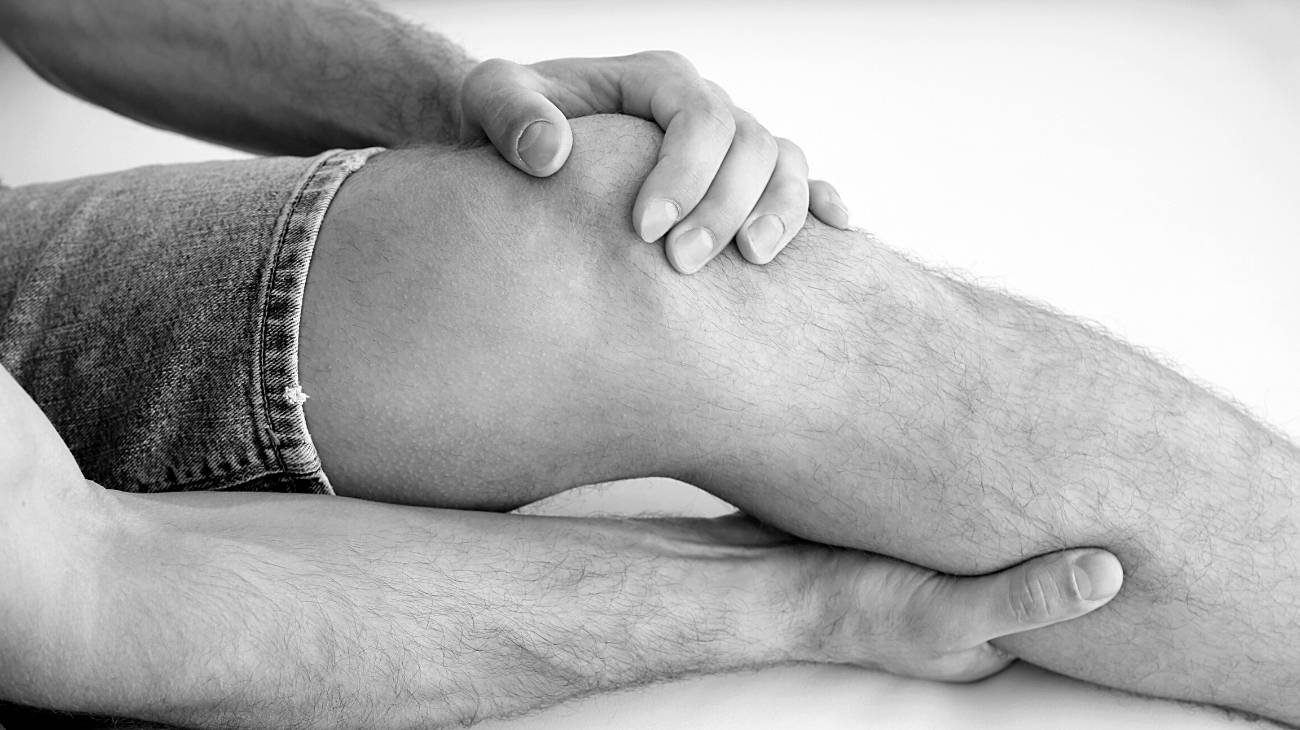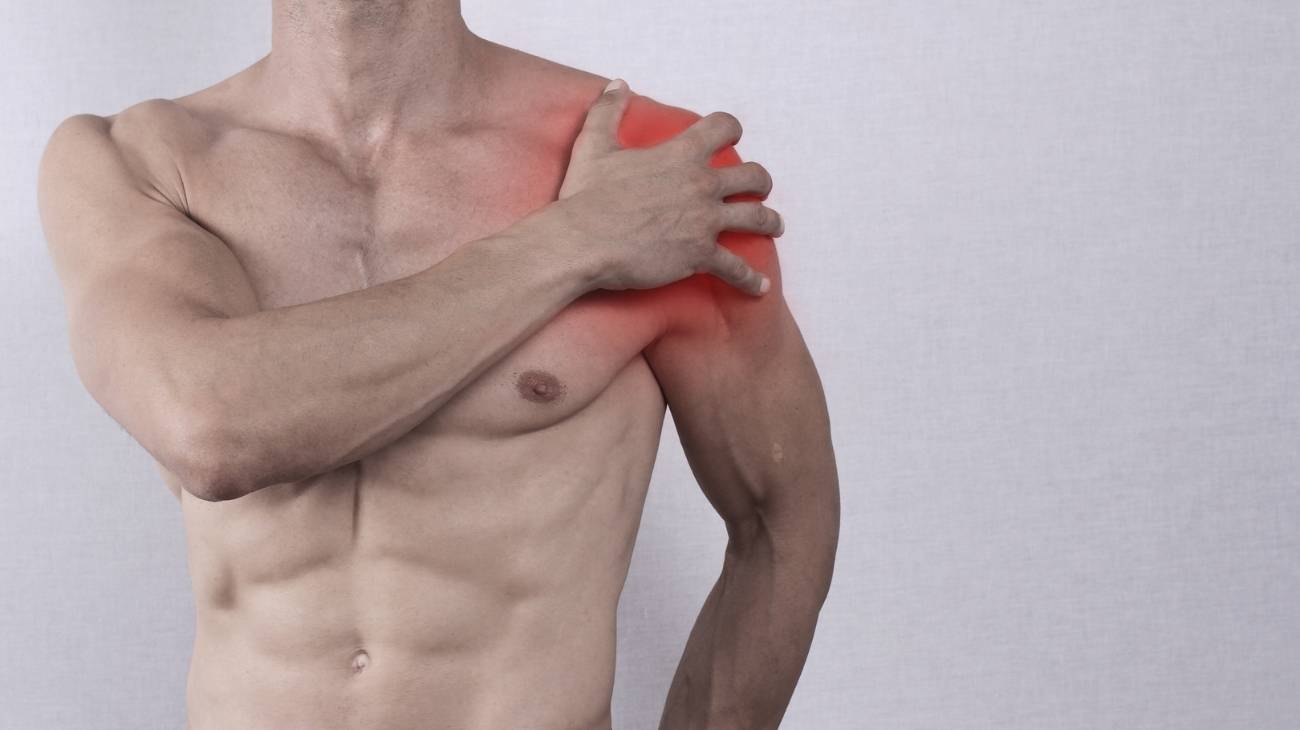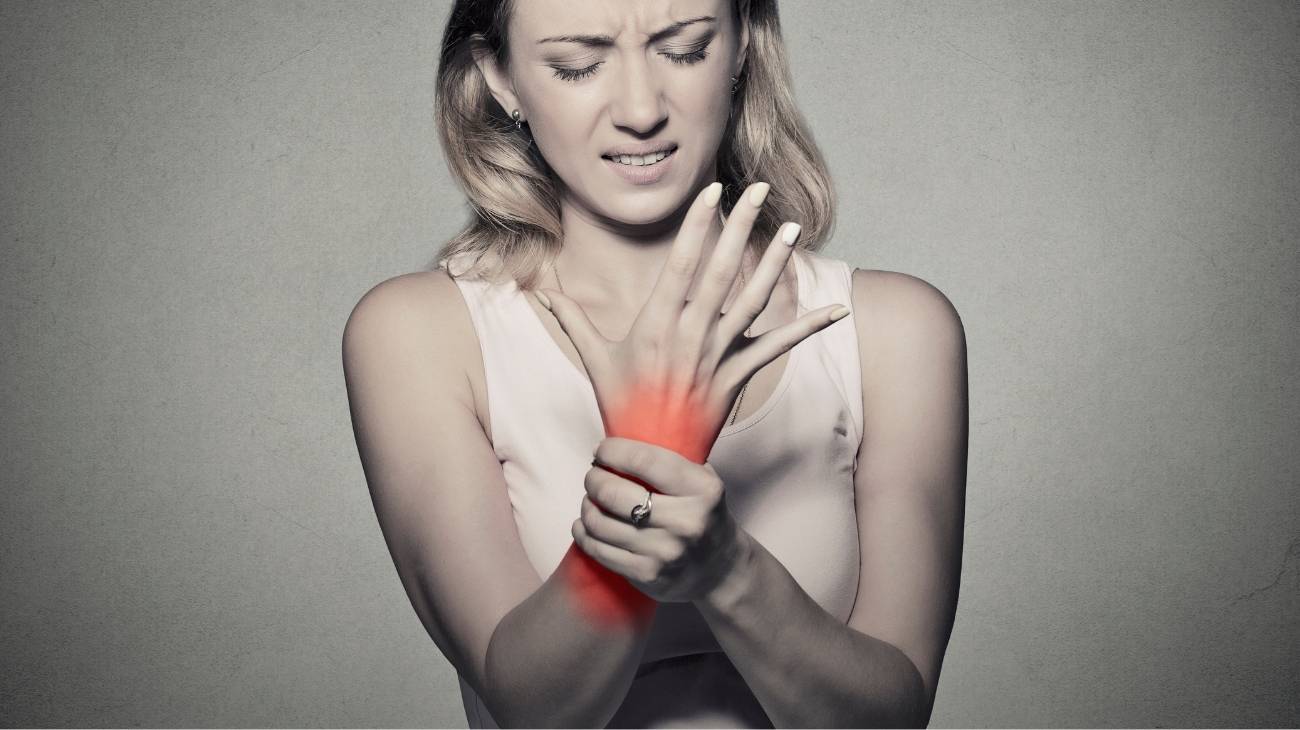- What is a sprained leg and what grades are there?
- What are the causes and risk factors for sprained knees and legs?
- Best products for legs sprain
- Main symptoms that warn us that we have a leg sprain
- What treatments are available to improve the symptoms of a sprained leg?
- What are the most effective prevention methods for knee and leg sprains?
Ligaments are sheets of fibrous tissue that consolidate the joints throughout the human body. They bind the bones of the joints together and allow some movement between them. However, when they are stretched beyond their limits, they suffer an injury that results in a sprain.
Therefore, if this happens to the ligaments in the knee or ankle, a sprained leg is possible. Consequently, anyone can suffer such a sprain and because it is so common, it is worth knowing what it is, how it is classified, what its causes and symptoms are, how it is cured and what ways there are to prevent it.
What is a sprained leg and what grades are there?
One of the most common leg injuries are sprains or strains. These are basically defined as a type of dislocation that is triggered when the fibrous portion connecting two or more bones linked to the lower limbs is overstretched or torn beyond its normal range of extension.
Leg sprains are classified according to their level of severity. This is a factor of great relevance when diagnosing a sprain in order to formulate the treatment needed to achieve a speedy recovery. For this reason, here we mention and highlight the types of leg sprains that can occur:
Grade 1
This is undoubtedly the mildest of all. It only causes ligament distension due to a saturated and forced stretching that affects the joint, but without causing tissue rupture. For this reason, the patient shows only mild pain, the swelling of the impacted area is minimal, the patient is able to make full movements and there is no associated joint laxity. As a result, the rehabilitation process is very dynamic.
Grade 2
This is a moderate leg sprain that is distinguished by the development of partial ligamentous tissue rupture (either 50% or less) and, as a result, mild joint instability is triggered. In addition, the pathology is accompanied by more severe pain, the swelling process is more accentuated, various levels of deformity and bruising can be visualised in the area. Therefore, the recovery process requires a greater focus than a grade 1 sprain.
Grade 3
This refers to the most severe leg sprain of all, as it develops a complete tear of one or more ligaments in the impacted area. Therefore, the pain is more acute and intolerable, the swelling is described as exuberant, the ecchymosis and deformity are completely elevated. As if that were not enough, there is also severe functional impotence of the joint. In this case, treatment will take longer to complete (it may take up to two months or more to reveal satisfactory results).
What are the causes and risk factors for sprained knees and legs?
The main reason for the development of a knee and leg sprain is the sudden and excessive stretching of one or more of the ligaments that support the bones of the joint in the area. But behind this are numerous causes, principles and risk factors that increase the likelihood of such an injury to a lower limb.
Here we highlight the most common ones that are related to this condition:
- Experiencing a fall or slipping on an uneven surface or wet ground.
- Receiving a direct blow to the leg or trauma around the leg.
- Wearing inappropriate shoes that do not fit the limbs properly, are not suitable for a specific activity or are too high.
- Having a poor physical condition that leads to a deficit of strength and flexibility in the muscles, ligaments and tendons associated with the legs.
- Being overweight or obese also increases the risk of lower limb sprains.
- Those who have a history of sprains or have suffered similar injuries primitively tend to trigger more sprains.
- Another risk factor is based on age. For, as the years go by, joints wear out and become more prone to injury.
- When an individual is fatigued, it is possible for a sprain to develop in the legs, either in the knee or ankle, because the muscles feel tired and do not provide the correct support.
Best products for legs sprain
Bestseller
-
2 Knee Compression Sleeve (Black/Gray)
£20,95 -
2 Knee Compression Sleeve (Green/Navy)
£20,95 -
2 Knee Compression Sleeve (Pink/Bordeaux)
£20,95 -
2 Thigh Compression Sleeve (Green/Navy)
£20,95 -
2 Thigh Compression Sleeve (Pink/Bordeaux)
£20,95 -
Microwave Wheat Bag for Back Pain Relief (Extra Large) (Hearts)
£24,95 -
Microwave Wheat Bag for Back Pain Relief (Extra Large) (Oxford)
£24,95 -
Microwave Wheat Bag for Back Pain Relief (Extra Large) (Sport)
£24,95 -
Microwaveable Wheat Bag for Pain Relief (Hearts)
£20,95 -
Microwaveable Wheat Bag for Pain Relief (Oxford)
£20,95 -
Microwaveable Wheat Bag for Pain Relief (Sport)
£20,95 -
Wheat Bag for Microwave Classic Bottle Shaped (Hearts)
£20,95 -
Wheat Bag for Microwave Classic Bottle Shaped (Oxford)
£20,95 -
Wheat Bag for Microwave Classic Bottle Shaped (Sport)
£20,95
-
2 Calf Compression Sleeve (Black/Gray)
£20,95 -
2 Calf Compression Sleeve (Green/Navy)
£20,95 -
2 Calf Compression Sleeve (Pink/Bordeaux)
£20,95 -
2 Patella Knee Strap (Black/Gray)
£12,95 -
2 Patella Knee Strap (Green/Navy)
£12,95 -
2 Patella Knee Strap (Pink/Bordeaux)
£12,95 -
2 Thigh Compression Sleeve (Black/Gray)
£20,95 -
Ice Massage Roller Ball (Black)
£34,95 -
Ice Massage Roller Ball (Green)
£34,95 -
Ice Massage Roller Ball (Pink)
£34,95 -
Soft Density Foam Roller for Recovery (Black)
£34,95 -
Soft Density Foam Roller for Recovery (Green)
£34,95 -
Soft Density Foam Roller for Recovery (Pink)
£34,95 -
Sport Compression Socks (1 Pair) (Black/Gray)
£20,95 -
Sport Compression Socks (1 Pair) (Green/Navy)
£20,95 -
Sport Compression Socks (1 Pair) (Pink/Bordeaux)
£20,95
Main symptoms that warn us that we have a leg sprain
By nature, it is possible to distinguish a sprained leg from other similar injuries through the symptomatological picture of a patient affected by this pathology.
Main signs and symptoms that a person shows after a sudden and violent leg strain:
- Pain in the injured limb: Depending on the level of severity, this may be more severe.
- Swelling: indicating underlying swelling within the soft tissue surrounding the joint or within the joint itself.
- Bruising, redness and discolouration of the skin around the dislocation.
- Warmth in the leg, especially on palpation of the area around the sprain.
- Loss of ability to move and use the joint.
- Noticeable instability along the length of the affected limb.
- If the sprain worsens, certain symptoms may be released such as: severe pain that does not go away, total decrease in mobility in the injured leg, and reddish or purplish streaks in areas adjacent to the sprain.
What treatments are available to improve the symptoms of a sprained leg?
To treat sprains in the leg, several types of treatment are currently available to normalise the functioning of the joint and accelerate the patient's rehabilitation process. Consequently, for more details, we explain each of the effective treatments to attenuate the symptoms of a sprained leg:
Alternative and complementary therapies
Mainly, alternative or complementary therapies are characterised by triggering an analgesic, anti-inflammatory and/or sedative effect in the body of the patient who has suffered the injury. We highlight the following complementary therapeutic techniques:
- Heat and cold therapy: This is a therapy that uses the properties of heat and cold to soothe the symptoms caused by an injury or strain, mainly. In the case of a sprained leg, treatment begins by applying cold to the affected area to relieve pain, reduce inflammation and swelling, for 20 minutes every 3 or 4 hours daily, for two or three consecutive days. Once the 72 hours are up, it is time to apply heat for the same amount of time, alternating with cold, to increase blood circulation and eliminate inflammation. It is important to do this with compresses or cold gel packs.
- Compression therapy: Compression also stands out as a therapeutic treatment capable of mitigating the pain produced by an injury of this category, thanks to the fact that it manages to regulate the functioning of the vascular wall and reduce the blood supply that is triggered in the area. To do this, it uses an elastic element that helps to exert a controlled pressure or force on the leg. In this case, a flexible bandage, knee or ankle compression brace should be used to regulate movement so that the joint can recover. It is important that it is not placed too tightly so as not to cause another major condition.
- Massage therapy: Another way to reduce the pain caused by a sprained leg is to rub and rub the limb in order to benefit blood circulation, reduce swelling and gradually increase range of motion. For this, essential oils (coconut, peppermint, geranium or rosemary) can be used and delicate circular movements can be made in the region. However, it is most appropriate to visit a trained massage therapist who knows how to treat this type of injury with relevant massage techniques.
- Acupressure therapy: Traditional Chinese medicine provides this therapy as a healing method to soothe pain, reduce swelling and help the body regenerate the tissues that have been injured by the sprain. Thus, to produce a soothing effect, deep manual massages are performed at strategic points to stimulate healing of the condition.
- Natural remedies using plants: There are several natural remedies that use the properties of certain plants to combat the swelling and pain that occurs when one or more ligaments are affected by a sudden stretch. As a result, they improve the symptoms of sprained legs and are therefore ideal for hastening the healing of the injured limb. In this case, it is advisable to do the following: drink infusions of dandelion, horsetail and rosemary, apply turmeric with water, eat walnuts, rub the leg with arnica essential oil and use a clay poultice at night.
- Healthy lifestyle habits: Living a healthy and balanced life, implementing different habits, is also appropriate to treat and prevent leg sprains, as far as possible. Since, through these habits, the organism will have more vigour to be able to hinder the development of numerous diseases or pathologies. For this, specifically, it is indicated: Exercise every day in a progressive manner, maintain an ideal body weight to avoid obesity, stop smoking and drinking alcohol, eat a balanced diet, stretch when and as appropriate, wear comfortable and suitable footwear, etc.
Nutritional supplements
Nutritional or food supplements are products that contain vitamins, proteins, minerals, herbs, enzymes, amino acids and/or fatty acids. For this reason, they are recommended to complement a balanced diet and thus help the body to carry out all its processes as effectively as possible. As a result, people can achieve a better quality of life in terms of health.
Consequently, to minimise a sprained leg and even avoid it, it is medically suggested to consume certain food supplements that have the ability to strengthen ligaments, joints and muscles. Whereas, many of them are also suitable for promoting joint care, soothing pain and eliminating inflammatory processes.
Thus, the following supplements should be taken:
- Collagen: It is defined as the component that has the greatest presence in the connective tissues of the organism. This means that it is involved in the repair of damaged ligamentous portions and tendons, as well as promoting joint health, strengthening bones, improving joint mobility and flexibility, and reducing pain and inflammation. Consequently, it is an essential protein for treating leg sprains through the following sources of collagen: oily fish, meat, milk, cheese, eggs, nuts, gelatine, cherries, strawberries, avocado, onion and celery.
- Vitamin C: Primarily a substance that stimulates the production of collagen, it is involved in the synthesis of this high-quality protein in the body. As a result, it is essential for maintaining the health of ligaments and tendons. It is also ideal for soothing pain, reducing inflammation and optimising the immune system of patients. It is therefore worthwhile to consume vitamin C during sprain rehabilitation, through foods such as: oranges, grapefruit, guavas, potatoes, papaya, melon, pineapple, kiwi, spinach, cauliflower, broccoli, cabbage, red and green peppers.
- Phosphorus: This is a nutrient that influences the formation, development and maintenance of bones and joints. Therefore, after a sprain in the leg or other lower limbs, it is able to repair the tissues affected by the sudden movement and, as if that were not enough, it can soothe muscle pain. To consume phosphorus naturally, we recommend eating: products rich in soya, fish (salmon, cod or white fish), cheeses (Romano, Parmesan or goat's cheese), lean beef and pork, nuts (walnuts, almonds, cashew nuts, for example).
- Calcium: This indispensable mineral in the body basically fulfils the same function as phosphorus (to form, develop and maintain bones and joints). In this sense, it promotes the vitality of bones so that they do not break easily and encourages the reconstruction of ligaments when they are sprained or dislocated. For this reason, to treat leg sprains, it is pertinent to consume calcium and avoid deficiencies of this mineral; its main sources are: nuts (almonds, hazelnuts and walnuts), dairy products (milk, cheese and yoghurt), sardines, salmon, oranges, apricots, figs, currants, red beans, kale, broccoli, etc.
- Sulphur: It is considered a necessary mineral for the formation of collagen and is therefore responsible for the formation of tendons, cartilage and ligaments. It also helps the liver to eliminate toxins, improves metabolism and relieves pain caused by rheumatic diseases. Thus, it is suitable for improving the symptoms of a sprain in any part of the body and in order for the patient to obtain its benefits, it is appropriate to consume: dairy products (milk, yoghurt, cheese, for example), fish, meat, eggs, garlic, onion, asparagus, sultanas, figs, etc.
- Vitamin K: This substance is characterised by supporting the rejuvenation of the joints, valuing that, it helps the organism to build healthy bones and tissues by means of proteins. In addition to this, it is responsible for generating protides that are essential for blood clotting. Thus, it is considered as a vitamin endowed to improve the joints and consequently, it benefits the healing of a sprained leg. You can consume vitamin K from: broccoli, spinach, kale, lettuce, figs, blueberries, vegetable oils, soybeans, eggs, meat and cheese.
Physiotherapy treatments
Physiotherapy is a health science that uses physical agents or natural elements to restore functionality in different parts of the body, prevent the complete loss of mobility and thus promote a satisfactory recovery process after an injury or trauma.
In this sense, first of all, it is advisable to go to a physiotherapist (a health professional trained to put into practice the exercises proposed by this science on a patient). In this way, the expert in question will be able to examine the case of sprain in detail and through the diagnosis, the level of severity and the state of the leg, will establish the types of exercises and the appropriate number of sessions to reduce the inflammation, as well as to restore regular mobility, restore the range of movement and heal the injured tissue.
Some exercises used are:
- Strengthening exercises: Depending on the severity of the sprain, the specialist will formulate some practices to start strengthening the injured leg. There are numerous exercises of this type and some of them, basically, are: Knee extensions and knee bends, wall squats, heel raises, lateral hip raises, etc.
- Stretching exercises: Other suitable exercises to improve the ailment are leg stretches. In this case, the following basic stretches can be used: hamstrings, calf muscles, quadriceps, hip flexors, gluteus muscles, adductors, etc.
- Proprioception exercises: Proprioception consists of the body's ability to discern the movement and position of each of its joints. Thanks to this, it promotes and improves the stability of the knees. Some of these types of exercises are: Balance on one leg, squat with or without weights, lunge with or without variants, vertical stride, etc.
Medications
Almost always, when a person suffers a sprain or strain in the leg, he or she chooses to take drugs or self-medicate without prior formulation to try to eliminate the pain that is triggered by the pathology.
To do this, they generally resort to over-the-counter drugs (ibuprofen, naproxen, or paracetamol, for example) in order to relieve the main discomfort that persists in the area. This is inadequate, however, because it tends to lead to harmful side effects such as nausea, vomiting, diarrhoea, fatigue, dizziness, fainting, drowsiness, dependence and even cardiac arrest.
Surgery
First- or second-degree sprains usually do not require surgery to heal. Through non-surgical treatment, patients can achieve full recovery of the affected joint and the joint's evolution is satisfactory. This is often not the case with complete rupture of one or more ligaments.
Therefore, those who suffer a third-degree sprain must undergo surgery, either to reconstruct the ligament using tissue from another adjacent region or to completely repair ligamentous tissue that cannot be cured by inherent therapies, medications or remedies. Thus, with appropriate rest time, patients will be able to regain mobility of their leg once the injured ligaments heal (this can take up to 8 weeks or more).
What are the most effective prevention methods for knee and leg sprains?
Fortunately, leg and knee sprains can be prevented, as long as they are not caused by accidental occurrences or sudden eventualities. Therefore, in order for people to be less at risk of suffering such an injury, we would like to highlight the most substantial tips for avoiding the various symptoms that are triggered by a sprain in these parts of the body.
It is worthwhile to implement the following effective care methods:
- Exercise every day and gradually: If you practice sports or physical activities constantly, you will have the benefit of maintaining a good physical condition. This strengthens your joints and tones your muscles so that they are more resistant to any sustainable effort.
- Don't forget to warm up and stretch properly: Doing these types of exercises before and after any physical activity will help your body to warm up and not suffer injuries due to untimely overexertion.
- Avoid playing sports when you feel tired or sore: Whenever your body feels fatigued or exhausted, it is much more likely to get sprains or other similar dislocations.
- Wear the right shoes for your feet: If your shoes can fit your feet perfectly, do not exert intolerable pressure, are not worn out and are comfortable, it is more difficult for your legs to get injured. Note that it is not advisable to wear high heels repeatedly.
- Use the appropriate protective equipment for each activity: When you are involved in a sport or action that requires you to make quick, withdrawn movements with your lower limbs, it is essential to use protective equipment that prevents direct contusions. This could be knee pads or leg wraps, for example.
- Make sure you maintain a balanced body weight: Obesity or being overweight is identified as one of the main risk factors for developing sprains easily in the legs, knees, ankles and feet.
- Be very careful when walking and/or running on uneven surfaces: If you must walk on curvy or bumpy roads, it is essential that you exercise caution and do not make any sudden or inappropriate movements. If you have a choice, choose to walk on flat ground.
- Stability and balance exercises : It is ideal to do this type of training to help develop the ability to regain balance and harmony in a natural way (i.e. to promote proprioception) so that you optimise your stability and your body is able to resist immoderate movements.
References
- Ettlinger, C. F., Johnson, R. J., & Shealy, J. E. (1995). A method to help reduce the risk of serious knee sprains incurred in alpine skiing. The American journal of sports medicine, 23(5), 531-537. https://journals.sagepub.com/doi/abs/10.1177/036354659502300503
- Logerstedt, D. S., Snyder-Mackler, L., Ritter, R. C., Axe, M. J., & Godges, J. J. (2010). Knee stability and movement coordination impairments: knee ligament sprain: clinical practice guidelines linked to the international classification of functioning, disability, and health from the Orthopaedic Section of the American Physical Therapy Association. Journal of Orthopaedic & Sports Physical Therapy, 40(4), A1-A37. https://www.jospt.org/doi/full/10.2519/jospt.2010.0303
- Clifton, D. R., Onate, J. A., Schussler, E., Djoko, A., Dompier, T. P., & Kerr, Z. Y. (2017). Epidemiology of knee sprains in youth, high school, and collegiate American football players. Journal of athletic training, 52(5), 464-473. https://meridian.allenpress.com/jat/article/52/5/464/112721/Epidemiology-of-Knee-Sprains-in-Youth-High-School
- Najibi, S., & Albright, J. P. (2005). The use of knee braces, part 1: prophylactic knee braces in contact sports. The American journal of sports medicine, 33(4), 602-611. https://journals.sagepub.com/doi/abs/10.1177/0363546505275128
- Orchard, J. W., & Powell, J. W. (2003). Risk of knee and ankle sprains under various weather conditions in American football. Medicine and science in sports and exercise, 35(7), 1118-1123. https://europepmc.org/article/med/12840631
- Nitz, A. J., Dobner, J. J., & Kersey, D. (1985). Nerve injury and grades II and III ankle sprains. The American journal of sports medicine, 13(3), 177-182. https://journals.sagepub.com/doi/abs/10.1177/036354658501300306
- Derscheid, G. L., & Garrick, J. G. (1981). Medial collateral ligament injuries in football: nonoperative management of grade I and grade II sprains. The American Journal of Sports Medicine, 9(6), 365-368. https://journals.sagepub.com/doi/abs/10.1177/036354658100900605
- Thompson, C., Kelsberg, G., & St Anna, L. (2003). Heat or ice for acute ankle sprain?. https://mospace.umsystem.edu/xmlui/handle/10355/2939
- Nunley, J. A., & Vertullo, C. J. (2002). Classification, investigation, and management of midfoot sprains: Lisfranc injuries in the athlete. The American journal of sports medicine, 30(6), 871-878. https://journals.sagepub.com/doi/abs/10.1177/03635465020300061901
- Roach, C. J., Haley, C. A., Cameron, K. L., Pallis, M., Svoboda, S. J., & Owens, B. D. (2014). The epidemiology of medial collateral ligament sprains in young athletes. The American journal of sports medicine, 42(5), 1103-1109. https://journals.sagepub.com/doi/abs/10.1177/0363546514524524





































































